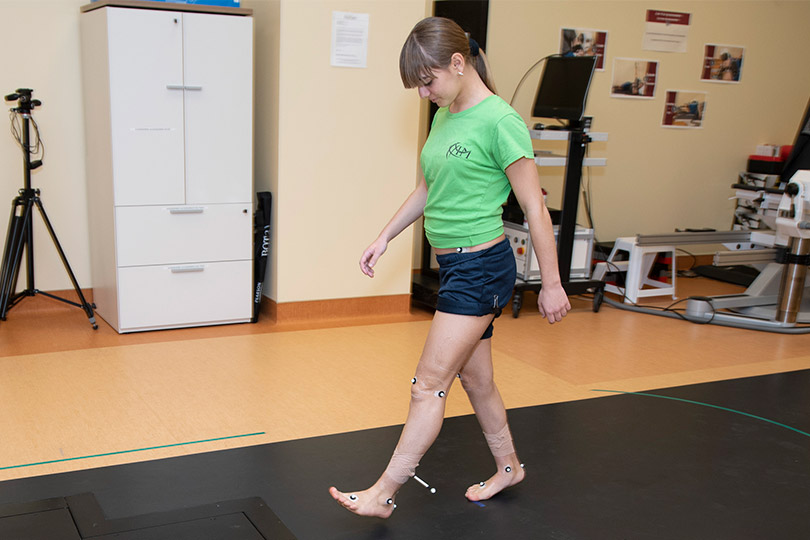Transforming Children's Movement through Motion Analysis Research
Since 1996, our motion analysis centers (MACs) have been collecting data that we're using to more effectively treat Shriners Children's patients with conditions that affect their movement.
More recently, we've expanded how we use and apply motion analysis data, processing and analyzing it to gain a greater understanding of the orthopedic and neuromuscular conditions we treat. After removing any information that could identify a patient, we, often in collaboration with other research institutions, take a detailed look at the interactions between muscles, joints and bones and study how those interactions influence a child's movement.
We're applying this data to our own research, as well as sharing it with our research partners. Together we'll develop more advanced treatments for conditions like scoliosis, cerebral palsy, spina bifida, muscular dystrophy, osteogenesis imperfecta (brittle bones) and foot deformities. This work is also allowing us to create more customized orthotics and prosthetics for children with these conditions.
Motion Analysis Research Partnerships
Motion analysis brings animation techniques to the clinical and research setting. High-speed cameras, reflective markers placed on the body, force platforms in the floor, and muscle sensors record measurements and movement patterns, allowing us to pay special attention to how a child walks, runs, swings their arms and bends and twists.
Shriners Children's distinguishes itself internationally as a recognized leader in clinical motion analysis and we're well-known for the sophistication of the technologies we use at our MACs. This reputation allows us to collaborate with prestigious universities and their researchers in areas including mathematics and biomedical engineering.
Two of our current partnerships are with Marquette University in Milwaukee, Wisconsin, and Loyola University in Chicago, Illinois. Both are being led by Gerald Harris, Ph.D., director of the motion analysis center at Shriners Children's Chicago.
With these partnerships and the collaborative research being done by Shriners Children's researchers and care providers, motion analysis data is guiding us toward countless new treatments and practices.
Researching Atypical Foot Movement
In collaboration with Marquette University, Karen Kruger, Ph.D., and Gerald Harris, Ph.D., from Shriners Children's Chicago, have developed biplane fluoroscopy imaging. Think of it as a real-time X-ray that consists of thousands of images put together, resulting in a 3-D video. In the past, they had access to limited research data, primarily from examinations, traditional X-rays and MRIs. However, with this new approach, they can more effectively study areas such as foot deformities, the use of orthotics and long-term surgical results.
Adding AI to the Research Process
Joseph Krzak, Ph.D., from Shriner Children's Chicago, is developing machine learning approaches to provide more advanced analysis of the vast data that comes from detailed motion analyses. Machine learning uses artificial intelligence to analyze data, identify patterns and make decisions with minimal human involvement. The information obtained will rapidly advance what is known and understood about how to address the mobility challenges caused by various pediatric conditions.
With these partnerships and the collaborative research being done by Shriners Children's researchers and care providers, motion analysis data is guiding us toward countless new treatments and practices.


